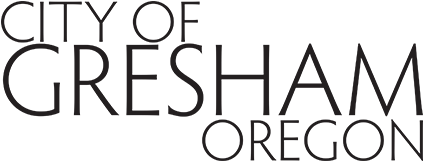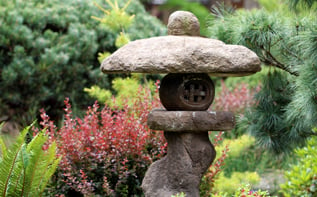- Home
- Environmental Services
- Wastewater Services
- Wastewater Treatment Plant
Environmental Services
Wastewater Treatment Plant
The City’s treatment plant treats an average of 12 million gallons daily and serves approximately 129,000 customers in Gresham, Fairview, and Wood Village.
- Energy Net Zero
- How the Plant Works
- Educational Tours
In 2015, the treatment plant reached energy net zero. The plant now produces more energy than it uses, saving the City an estimated $500,000 a year in electricity costs.
Fats, oils, and grease (FOG) are trucked to the plant from local food service establishments. The City collects a tipping fee for receiving and recycling this waste. Adding FOG to the digestion process increases biogas production.
The biogas produced is treated to remove contaminants and moisture and fed into two powerful cogen engines that convert biogas into heat and electricity.
Liquid treatment
1. Preliminary treatment
Wastewater enters the treatment plant, flows through screens with quarter-inch spacing, which removes large objects that could damage equipment. Small particles, called Grit, typically composed of sand, gravel, and other heavy solid materials, are then removed in a large conical tank where, with mixing, the grit settles to the bottom of the cone and the water is able to pass to primary treatment.
2. Primary treatment
Solids that make it to primary treatment are settleable or suspended in nature. The settleable particles are forced to settle out of solution with reduced velocity through large tanks called primary clarifiers. The settled solids are called primary sludge and are removed, treated, and converted to biogas to help create energy to power the treatment plant.
3. Aeration
As suspended solids are not treated in primary treatment, their removal involves secondary treatment to convert them into a settleable form. This is accomplished by adding air with Aeration Basins. Aeration is a process of pumping air into tanks which promotes microbial growth in wastewater. The oxygen helps the bacteria break down suspended organic matter, converting it into a settleable form, called Flocs which are removed with Secondary Clarification.
4. Secondary clarification
The wastewater from the aeration basin is slowed down and the Flocs generated are settled to the bottom of the tank and either returned to the aeration basins to keep the cultivated microbes in solution to continue treatment, or removed and further processed via solids treatment.
5. Disinfection
The wastewater is then disinfected with sodium hypochlorite to remove any disease-causing organisms and ensure that the water leaving the plant meets the water quality standards set by the Environmental Protection Agency (EPA) and the Oregon Department of Environmental Quality (DEQ).
6. Plant Effluent
Following the treatment, the water is discharged to the Columbia River.
Solid treatment
1. Sludge thickening
Solids produced in primary and secondary treatment require additional treatment before beneficial reuse through the Biosolids Program. The first step is to thicken the sludge to maximize retention times in the digesters.
The WWTP accomplishes this with equipment designed to drain water from the sludge while retaining a majority of the solids.
2. Digestion
Thickened sludge and FOG are pumped into large tanks called Anaerobic Digesters. Anaerobic means without air and digestion is another process that cultivates microbial growth to break down the organic compounds in the sludge. The two major outputs from this process are biosolids and biogas.
3. Sludge dewatering
Solids processed through digestion are less concentrated than the thickened sludge fed into digestion. To save on hauling costs, these solids are dewatered prior to distribution through the Biosolids Program.
4. Biosolids Program
Solids processed through digestion are treated to Class B per EPA standards and contain beneficial nutrients for various crops. Instead of disposing of these solids in landfills, the City, with coordination and approval of DEQ and farm-owners, hauls these solids for beneficial reuse through land application.
Schedule a tour of the Wastewater Treatment Plant
20015 NE Sandy Blvd.
503-618-3450
- Take a 45-minute guided tour through each step of the treatment process.
- Learn how the solar array and biogas generation allow the plant to be energy net-zero.
Tour the Columbia Slough Regional Stormwater Treatment Facilities
- Take a 45-minute self-guided tour through this restored parcel of land.
- School groups can check out a backpack of educational materials full of activities such as a scavenger hunt.
More information and educational resources.










